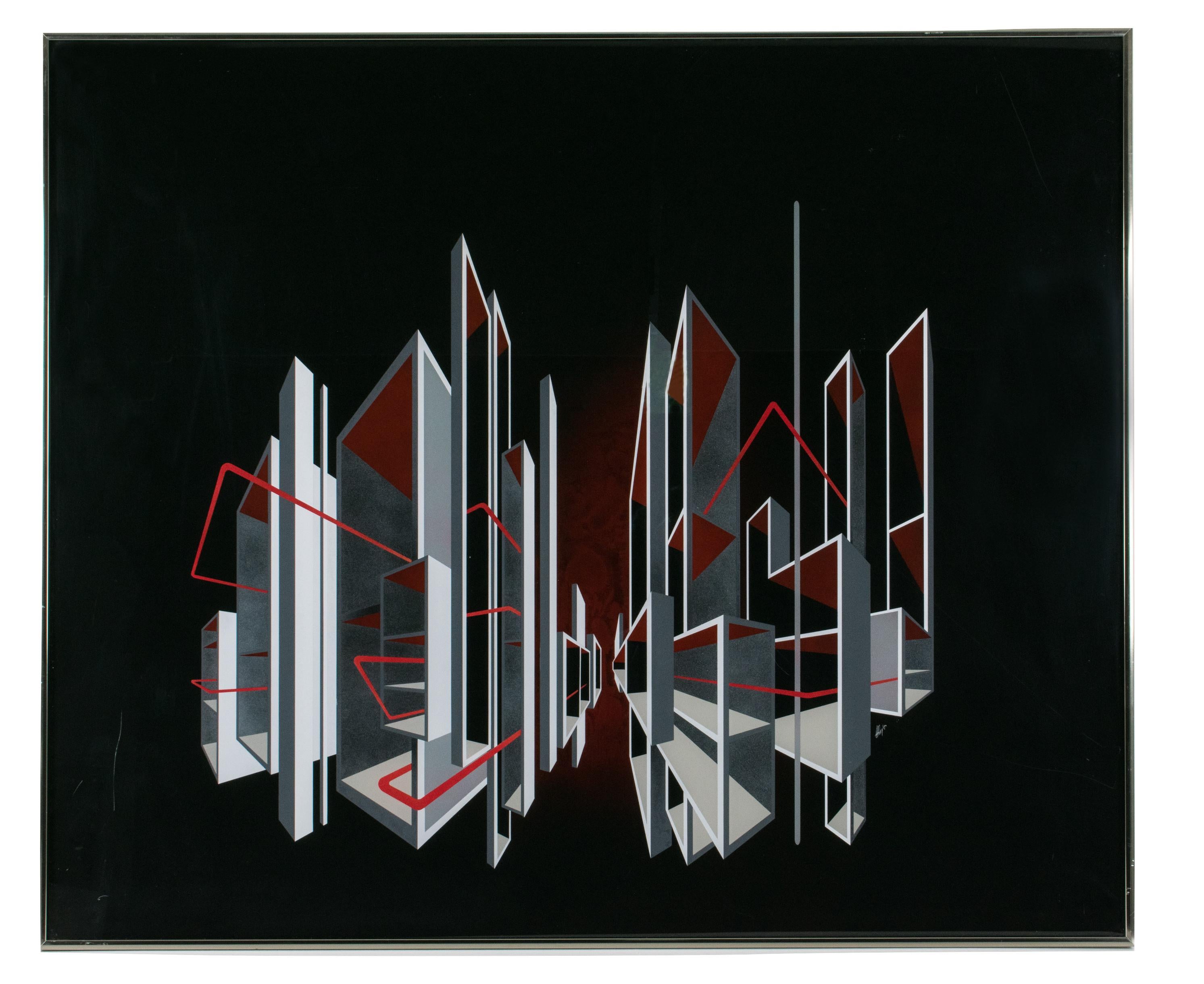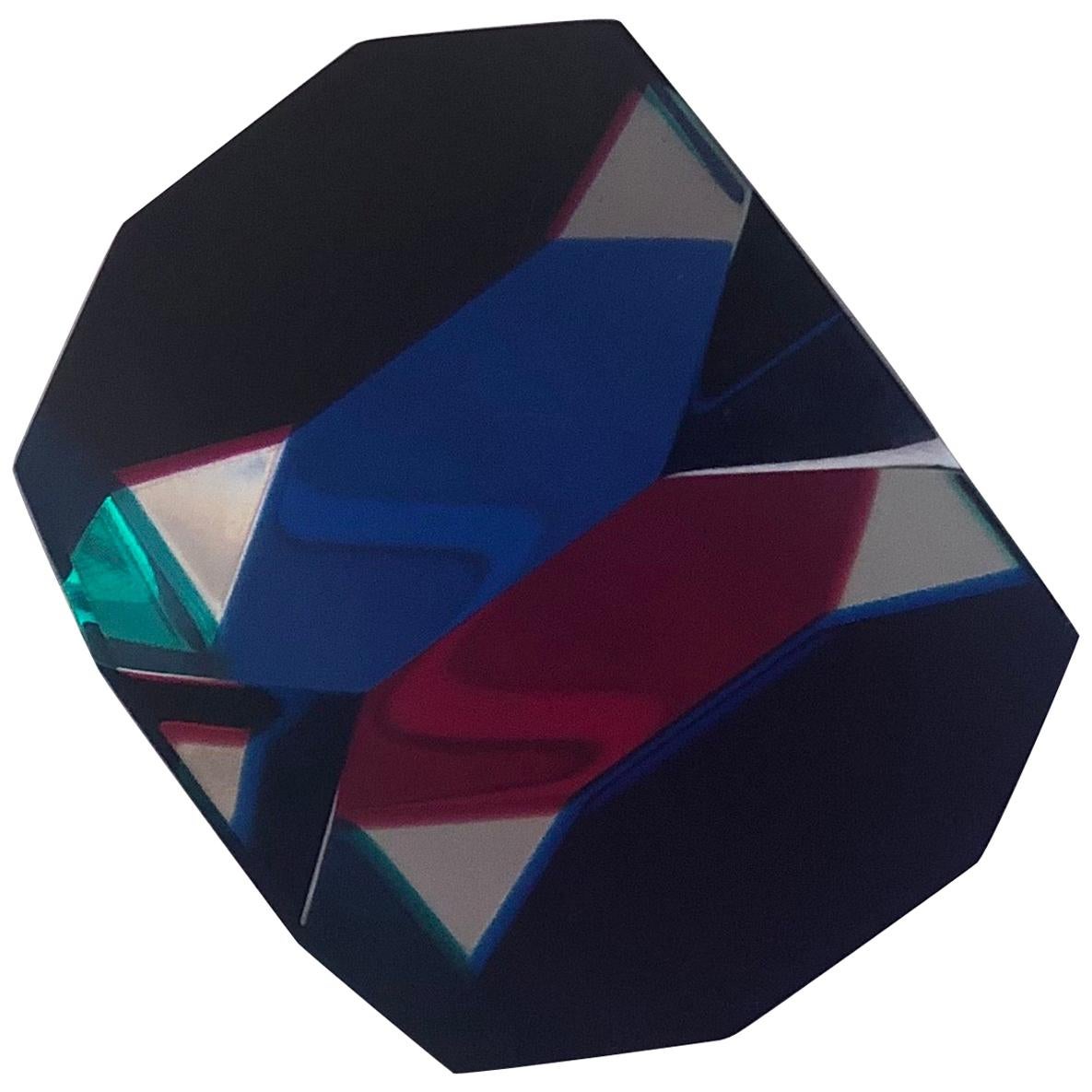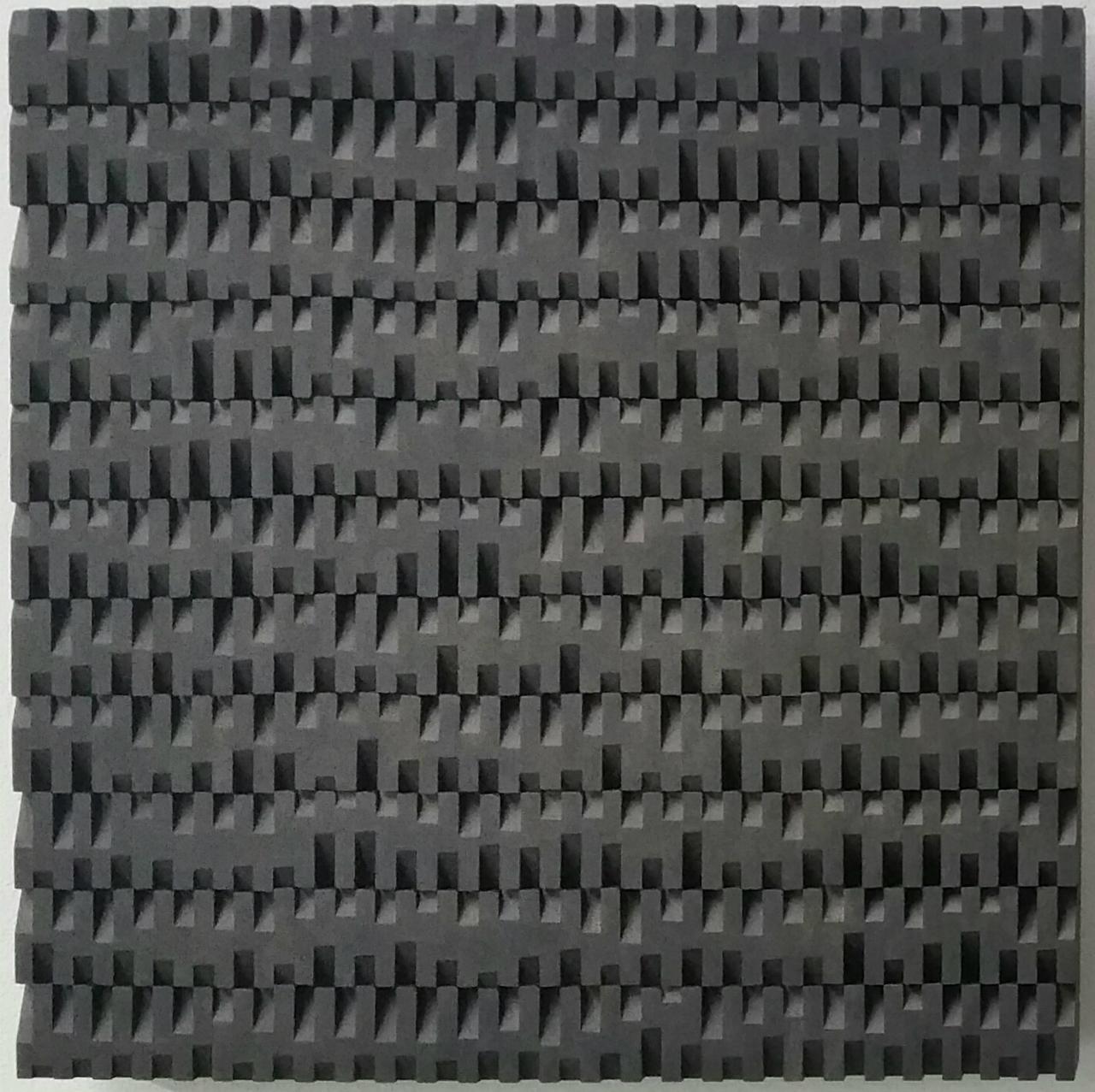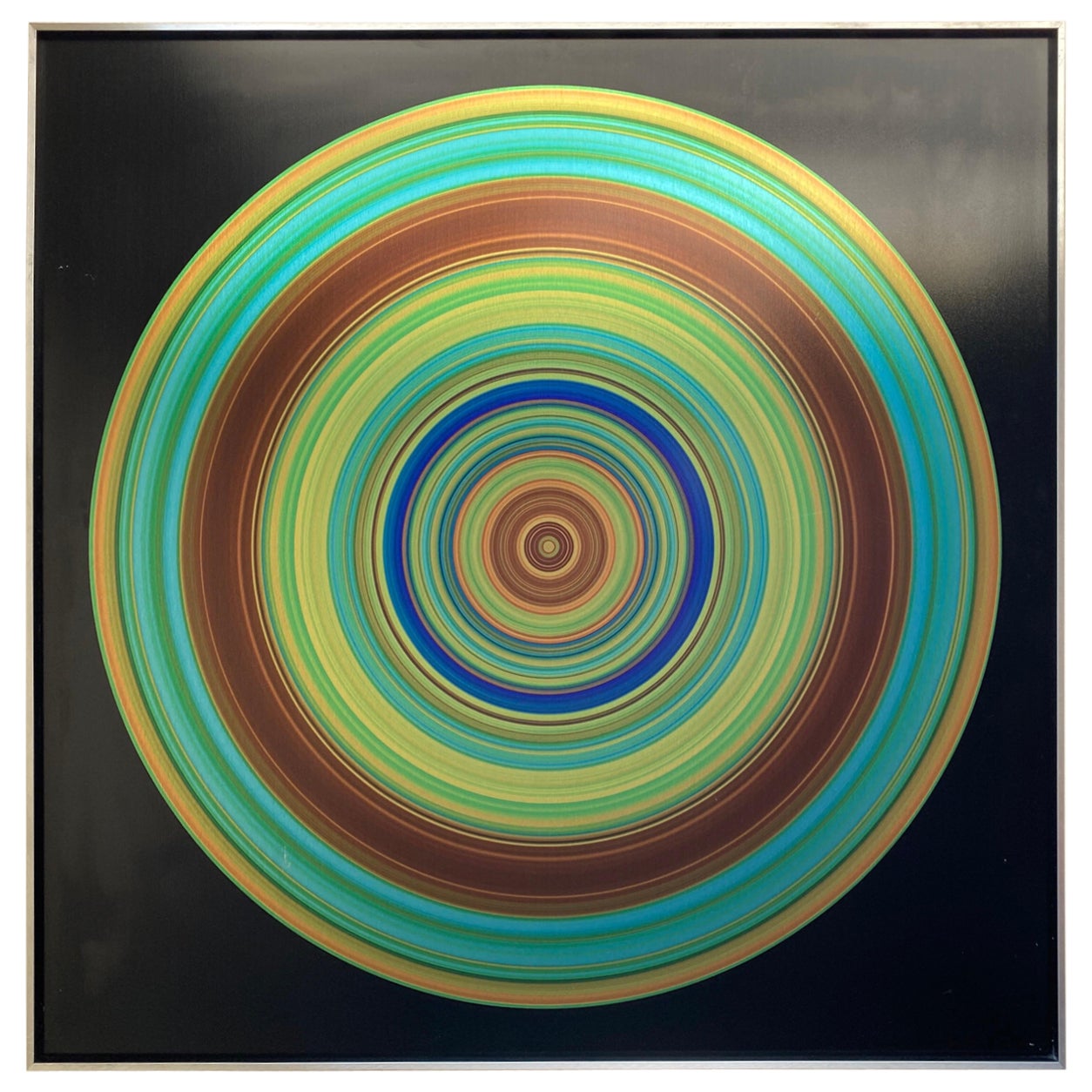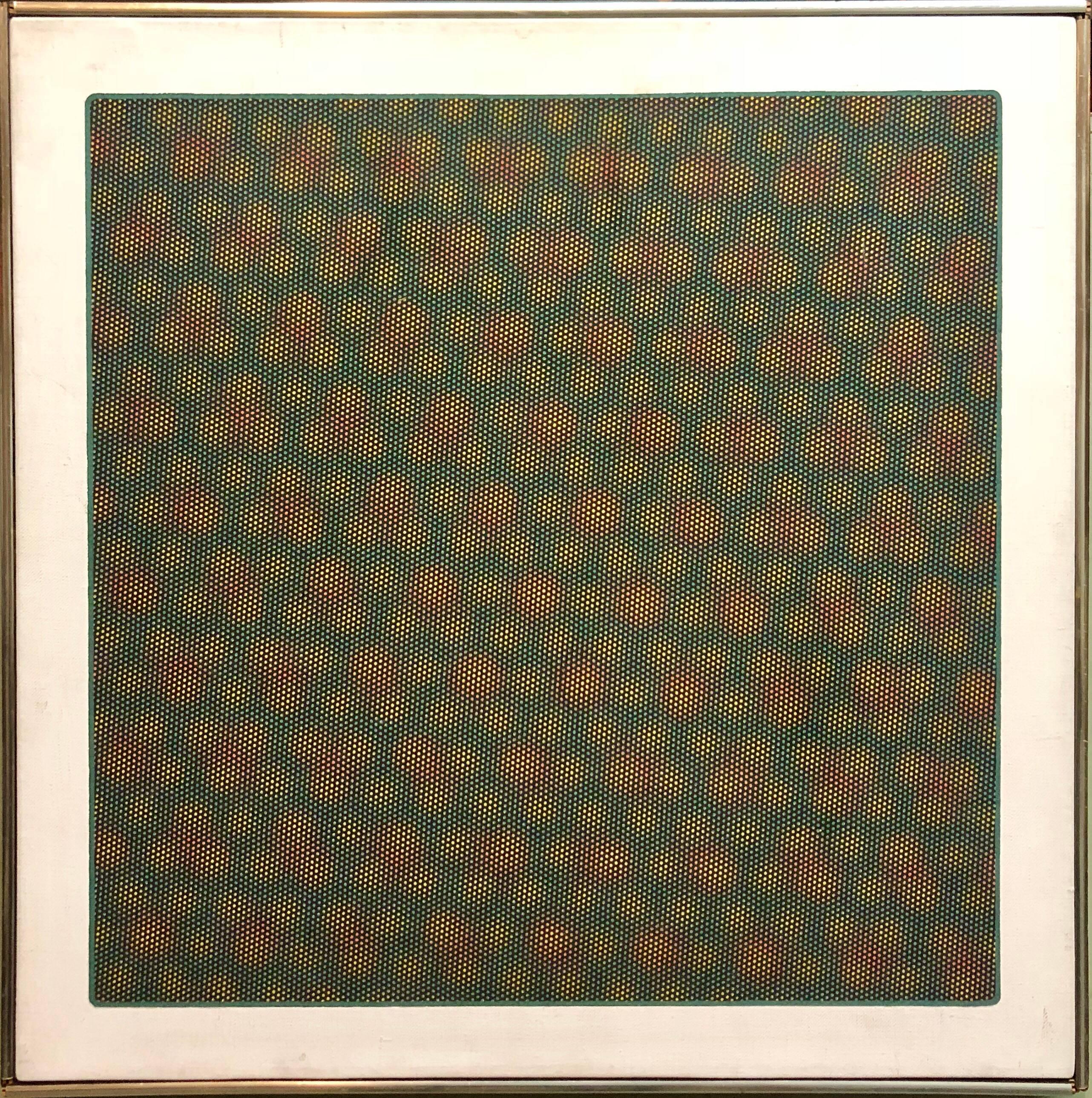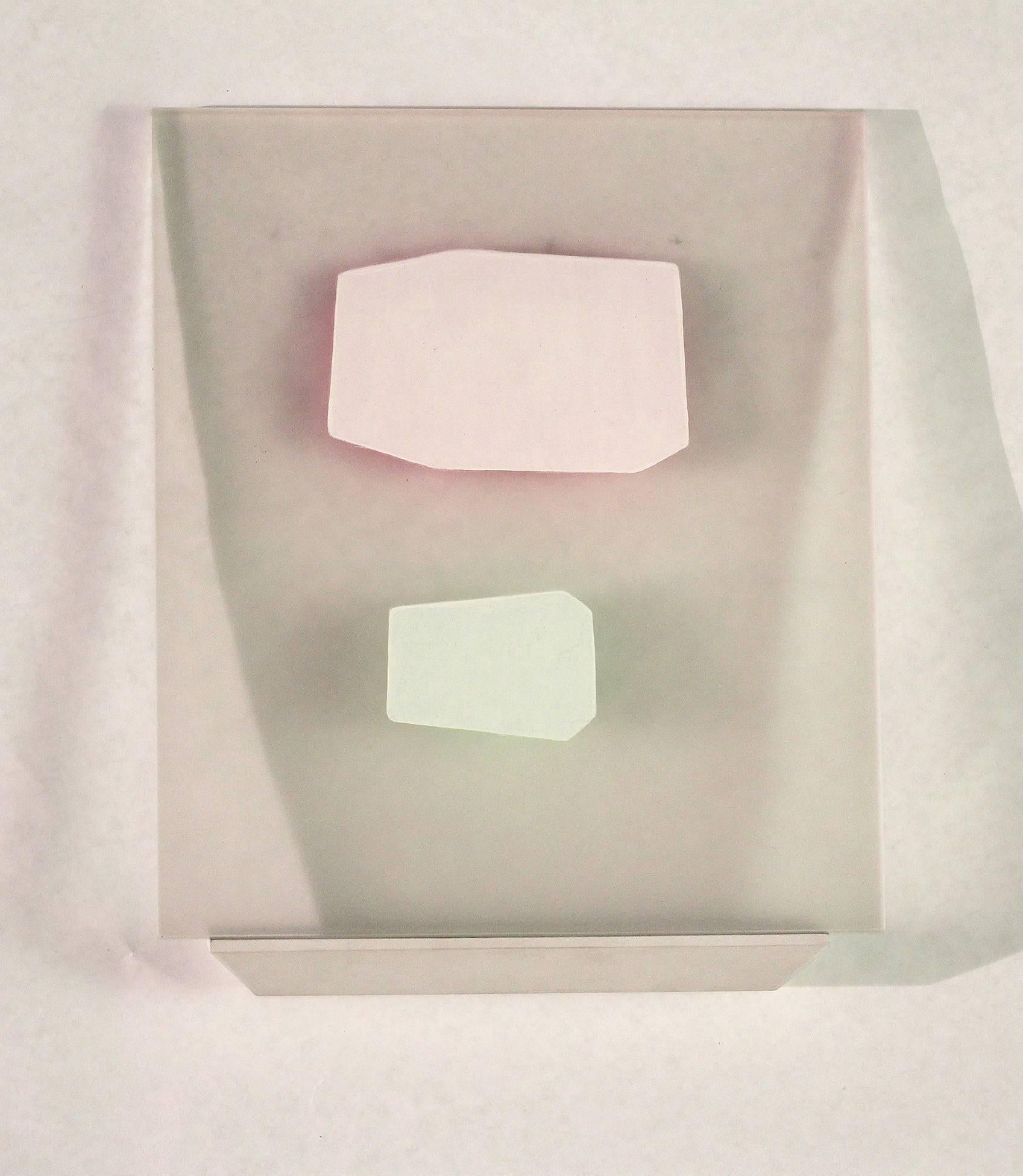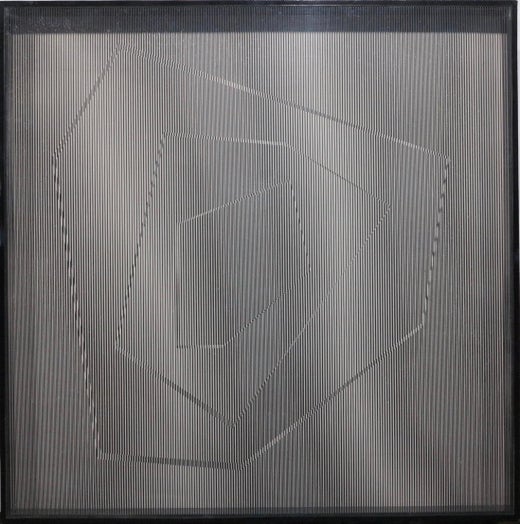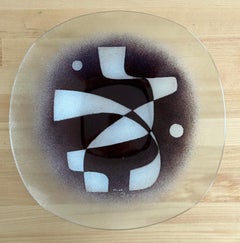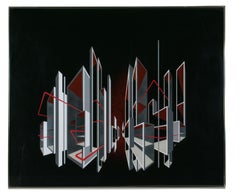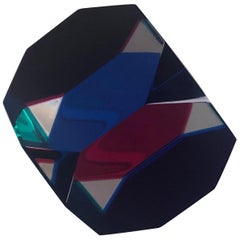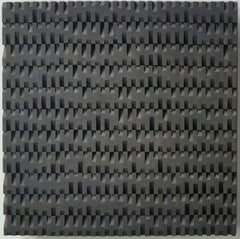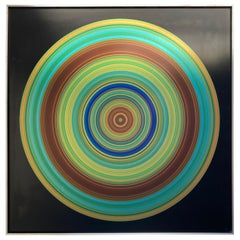Items Similar to The Edge V (Op Art plexiglass box wall sculpture)
Want more images or videos?
Request additional images or videos from the seller
1 of 12
Mon LevinsonThe Edge V (Op Art plexiglass box wall sculpture)1965
1965
$6,000
$12,00050% Off
£4,577.71
£9,155.4250% Off
€5,234.88
€10,469.7750% Off
CA$8,455.28
CA$16,910.5650% Off
A$9,219.58
A$18,439.1650% Off
CHF 4,892.74
CHF 9,785.4850% Off
MX$111,461.72
MX$222,923.4450% Off
NOK 61,921.15
NOK 123,842.3050% Off
SEK 56,759.35
SEK 113,518.6950% Off
DKK 39,099.18
DKK 78,198.3650% Off
About the Item
Mon Levinson (1926-2014). The Edge V, 1965. Plexiglass, acetate and paper. 24 x 24 x 3 inches. Minor scuffing on surface of plexiglass. Original gallery label affixed en verso.
Biography:
Birth place: NYC
Addresses: NYC
Profession: Sculptor
Exhibited: “The Responsive Eye,” MoMA, 1965; “Plus by Minus,” Albright-Knox Gal., Buffalo, NY, 1968; “A Plastic Presence,” Milwaukee (WI) Art Center, New York & San Francisco, 1969-70; WMAA, 1970, 1973; Maeght Found., Art Vivant aux …tats Unis, France, 1970.
Work: WMAA; Hirshhorn Coll., Wash., DC; NY Univ. Art Coll.; Rose Art Gal., Brandeis Univ., Waltham, MA; Columbia Broadcasting System, NYC. Commissions: Objects, MoMA, 1964, 1966 & 1969; sculpture, Astor Found. grant, P.S. 166, New York, 1967; mural-sculpture, Great Southwest Atlanta Corp., Atlanta, GA, 1968; mural-sculpture, Housing & redevelop. bd., Demountable Vest Pocket Parks, New York, 1969.
Comments: Teaching: CW Post College, 1970-72.
- Creator:Mon Levinson (1926 - 2014, American)
- Creation Year:1965
- Dimensions:Height: 24 in (60.96 cm)Width: 24 in (60.96 cm)Depth: 3 in (7.62 cm)
- Medium:
- Movement & Style:
- Period:
- Condition:
- Gallery Location:Wilton Manors, FL
- Reference Number:1stDibs: LU24523597512
Mon Levinson
Monroe Levinson (1926–2014) was an American sculptor and printmaker known for his Op art work. Levinson was born on January 6, 1926, in New York City. He studied at the University of Pennsylvania. One of his prints Untitled #1 was included in the 1965 portfolio New York Ten.
About the Seller
4.9
Platinum Seller
Premium sellers with a 4.7+ rating and 24-hour response times
Established in 2007
1stDibs seller since 2015
441 sales on 1stDibs
Typical response time: 4 hours
- ShippingRetrieving quote...Shipping from: Wilton Manors, FL
- Return Policy
More From This Seller
View AllUntitled Minimalist Sculptural painting
By Harris Strong
Located in Wilton Manors, FL
Beautiful abstract painting by American artist, Harris Strong (1920-2006).
Acrylic and pins on folded handmade paper, 1970's. Measures 30 x 40 inches framed. Weighs 22 lbs.
Color ...
Category
1970s Minimalist Abstract Paintings
Materials
Acrylic, Handmade Paper
$900 Sale Price
25% Off
Geometric abstract glass dish
Located in Wilton Manors, FL
Plate is in perfect condition. and measures 1.75 x 9.75 x 9.75 inches.
Category
Mid-20th Century Abstract Geometric More Art
Materials
Glass
Untitled (Hard Edge minimalist abstraction)
By Edward Landon
Located in Wilton Manors, FL
Edward August Landon (1911-1984). Untitled, ca. 1960. Oil on wood panel, 4 x 4 inches. Measures 7 x 7.25 inches framed. Signed lower right. Excellent condition. Minor staining in matting.
Birth place: Hartford, CT
Death place: Hartford
Addresses: NYC, 1947; Weston, VT, 1973
Profession: Printmaker, painter
Studied: Hartford Art School; ASL; also with Carlos Merida, Mexico.
Exhibited: S. Indp. A., 1940; Nat. Serigraph Soc., 1940-60; Am. Color Print Soc. Ann., 1945-65; Northwest Printmakers Ann., 1950-60; U.S. Info Agency Int. Circulating Exhib., 1952; Boston Printmakers Ann., 1955-70; nationally in print exhibs., since 1941; Doris Meltzer...
Category
Mid-20th Century Abstract Geometric Abstract Paintings
Materials
Wood, Oil
$960 Sale Price
20% Off
Abstract Constructivist Composition
By Alexander Rodchenko
Located in Wilton Manors, FL
Constructivist abstract painting, ca. 1940
Oil on canvas, 20 x 24 inches.
Unframed, unsigned.
In all likelihood, the painting is American, not European or Russian.
Marking on ver...
Category
Mid-20th Century Abstract Geometric Abstract Paintings
Materials
Oil
Cubist abstract composition
Located in Wilton Manors, FL
Robert Lepper (1906-1991) . Cubist composition, 1931. Cut copper, brass and steel sheeting tacked to masonite panel. Panel measures 14.5 x 24 inches. Total framed measurement 20 x 29...
Category
1930s Cubist Mixed Media
Materials
Brass, Copper, Stainless Steel
$2,925 Sale Price
35% Off
#135 (Abstract Expressionist painting)
By Douglas M. Olsen
Located in Wilton Manors, FL
Douglas M. Olsen (b. 1960). #135, 1982. Watercolor on rag paper, 22 x 30 inches. Signed lower margin and on verso.
Category
20th Century Abstract Expressionist Abstract Paintings
Materials
Watercolor, Rag Paper
$200 Sale Price
60% Off
You May Also Like
Cityscape Kinetic Optical Op Art Painting on Plexiglass by L.L. Long
Located in Atlanta, GA
American artist L. L. Long created this striking composition in 1980. The artwork features a kinetic optical Op Art geometric cityscape design using reverse spray paint on a Lucite o...
Category
1980s Op Art Abstract Paintings
Materials
Lucite, Plexiglass, Spray Paint
Op Art Acrylic Octagonal Cube Sculpture by Vasa Mihich
By Vasa Velizar Mihich
Located in San Diego, CA
Op Art acrylic octagonal cube sculpture by Vasa Mihich, circa 1995. The optical look is changed by rotating the piece and letting the light refract at d...
Category
Late 20th Century American Post-Modern Abstract Sculptures
Materials
Lucite, Acrylic
$1,000 Sale Price
20% Off
Entrelacements no. I - contemporary modern geometric sculpture painting relief
By Olivier Julia
Located in Doetinchem, NL
Entrelacements I is the first of two different medium size contemporary modern sculpture painting reliefs by French-Dutch artist Olivier Julia. The relie...
Category
2010s Contemporary Abstract Paintings
Materials
Wood, Acrylic
Michael Piquette Op Art Aluminum Decorative Wall Art
By Victor Vasarely
Located in North Hollywood, CA
Michael Piquette " Nuit Blanche a Amsterdam " futuristic op art print on aluminum. Dated 2014-15 edition 2 of 5.
Category
21st Century and Contemporary Canadian Futurist Contemporary Art
Materials
Aluminum
Op Art 1971 Kinetic Oil Painting Pop Art Artist
By Josef Levi
Located in Surfside, FL
Josef Alan Levi (1938) is an American artist whose works range over a number of different styles, but which are unified by certain themes consistently present among them. Josef Levi began his artistic career in the 1960s and early '70s, producing highly abstract and very modernist pieces: these employing exotic materials such as light fixtures and metallic parts. By 1975, Levy had transitioned to painting and drawing still lifes. At first these were, traditionally, of mundane subjects. Later, he would depict images from art history, including figures originally created by the Old Masters. Around 1980, he made another important shift, this time toward creating highly precise, though subtly altered reproductions of pairs of female faces which were originally produced by other artists. It is perhaps this work for which he is most well known. Since around 2000, Josef Levi has changed the style of his work yet again: now he works entirely with computers, using digital techniques to abstract greatly from art history, and also from other sources.
Levi's works of art in the collections of the Museum of Modern Art, NYC, the National Gallery of Art, and the Albright-Knox Museum, among many others. Levi's art has been featured on the cover of Harper's Magazine twice, once in June 1987, and once in May 1997.
Josef Levi received a Bachelor of Arts degree in 1959 from the University of Connecticut, where he majored in fine arts and minored in literature. From 1959 to 1960, he served to a first lieutenant in the U.S. Army, and from 1960 through 1967 he was in the U.S. Army Reserves.
In 1966, he received the Purchase Award from the University of Illinois in 1966, and he was featured in New Talent U.S.A. by Art in America. He was an artist in residence at Appalachian State University in 1969, taught at Farleigh Dickenson University in 1971 and was a visiting professor of art at Pennsylvania State University in 1977. From 1975 to 2007, Levi resided in New York City. He now lives in an apartment in Rome, where he is able to paint with natural light as he was unable in New York.
From 1959 to 1960, Josef took some courses of Howard McParlin Davis and Meyer Schapiro at Columbia University which initiated him into the techniques of reproducing the works of the Old Masters. His first works, created in the 1960s, were wood and stone sculptures of women. His first mature works were abstract pieces, constructed of electric lights and steel.
In 1970, Levi's materials included fluorescent light bulbs, Rust-Oleum and perforated metal in addition to paint and canvas.
By 1980, Josef Levi's art had transformed into a very specific form: a combination of reproductions of female faces which were originally depicted by other artists. The faces which he reproduces may be derived from either portraits or from small portions of much larger works; they are taken from paintings of the Old Masters, Japanese ukiyo-e, and 20th-century art. Artists from whom he has borrowed include: Vermeer, Rembrandt, Piero della Francesca, Botero, Matisse, Utamaro, Correggio, Da Vinci, Picasso, Chuck Close, Max Beckmann, Pisanello, Lichtenstein. The creation of these works is informed by Levi's knowledge and study of art history.
Josef Levi's paintings from this period are drawn, then painted on fine linen canvas on wooden stretchers. The canvas is coated with twenty-five layers of gesso in order to produce a smooth surface on which to work. The drawing phase takes at least one month. Levi seals the drawing with acrylic varnish, and then he may apply layers of transparent acrylic in order to approximate the look of old paintings. After the last paint is applied, another layer of acrylic varnish is sprayed on to protect the work.
Most of the figures in his contemporary pieces are not paired with any others.
SELECTED COLLECTIONS
MUSEUM OF MODERN ART, NEW YORK, NY
ALBRIGHT- KNOX GALLERY, BUFFALO, NY
ALDRICH MUSEUM OF CONTEMPORARY ART, RIDGEFIELD, CT
NATIONAL GALLERY OF ART, WASHINGTON, DC
BROOKLYN MUSEUM OF ART, BROOKLYN, NY
SMITHSONIAN NATIONAL MUSEUM OF AMERICAN HISTORY, WASHINGTON, DC
CORCORAN GALLERY, WASHINGTON, DC
UNIVERSITY OF NOTRE DAME ART...
Category
1970s Op Art Abstract Paintings
Materials
Canvas, Oil
Steven Baris, Ruse Of Transparency 13, 2014, plexiglass, acrylic paint
By Steven Baris
Located in Darien, CT
Steve Baris is interested in the interconnections of the built environment and spatial experience.
His artwork is a response to a largely overlooked type of landscape that is emerg...
Category
2010s Abstract Geometric Abstract Paintings
Materials
Plexiglass, Acrylic
